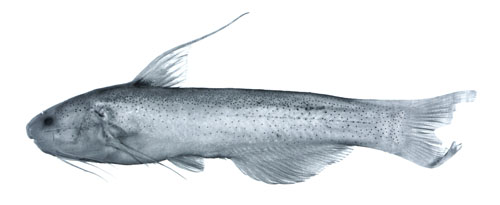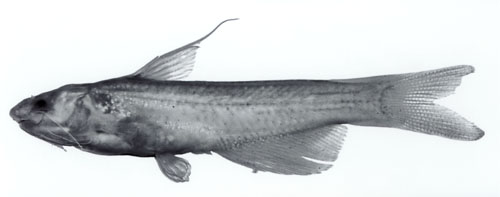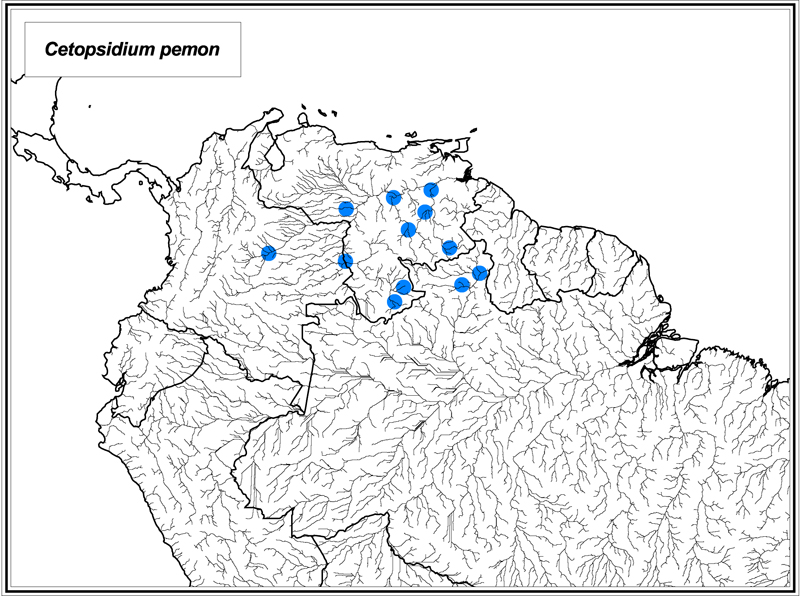

Cetopsidium pemon Vari, Ferraris & de Pinna, 2005
Identification: Cetopsidium pemon differs from C. ferreirai in the degree of development of the first rays of the dorsal and pectoral fins (with distal filaments present in presumed males as indicated by the possession of a distinctly convex anal-fin margin versus absent in such specimens, respectively), the overall form of the head (profile of head distinctly pointed versus anteriorly rounded in lateral view, respectively), and in the length of the snout (approximately 3 times diameter of eye versus approximately 2 times diameter of eye, respectively). Cetopsidium pemon differs from C. minutum in the length of the pelvic fin (barely reaching or falling short of the vent versus reaching to the anal-fin origin, respectively). Cetopsidium pemon differs from C. morenoi in the form of the dark pigmentation on the body (small, point-like, scattered chromatophores located on the dorsal and lateral surfaces of the head versus large stellate chromatophores present in those areas, respectively) and in the degree of development of the adductor mandibular muscles (moderately-developed and not particularly obvious externally versus very well developed and distinctly obvious externally on dorsolateral portion of head, respectively). Cetopsidium pemon differs from C. orientale in the overall coloration (small, point-like, scattered chromatophores over the dorsal and lateral surfaces of the head and body versus large, stellate, dark chromatophores which densely cover the dorsal and lateral surfaces of the head and body, respectively), and in the alignment of the dorsal and ventral profiles of the portion of the body posterior of the base of dorsal fin (converging posteriorly versus running in parallel, respectively). Cetopsidium pemon differs from C. roae in the position of the vent (located proximate to versus distinctly separated from the base of the anterior most anal-fin ray, respectively), in the alignment of the dorsal and ventral profiles of the portion of the body posterior of the base of dorsal fin (converging posteriorly versus running in parallel, respectively), and in the degree of development of the first rays of the dorsal and pectoral fins (with distal filaments present in presumed males as indicated by the possession of a distinctly convex anal-fin margin versus the apparent absent of these structures, respectively).
Range: Cetopsidium pemon is known from the Rio Caroni and the Rio Caura basins, southern tributaries of the Rio Orinoco in eastern Venezuela, the Rio Meta basin of the western portions of the Rio Orinoco system in eastern Colombia, and the upper portions of the Rio Branco in northern Brazil.
Information from Vari, R. P., C. J. Ferraris Jr. & M. C. C. de Pinna. 2005. The Neotropical whale catfishes (Siluriformes: Cetopsidae: Cetopsinae), a revisionary study. Neotropical Ichthyology 3:127-238.
